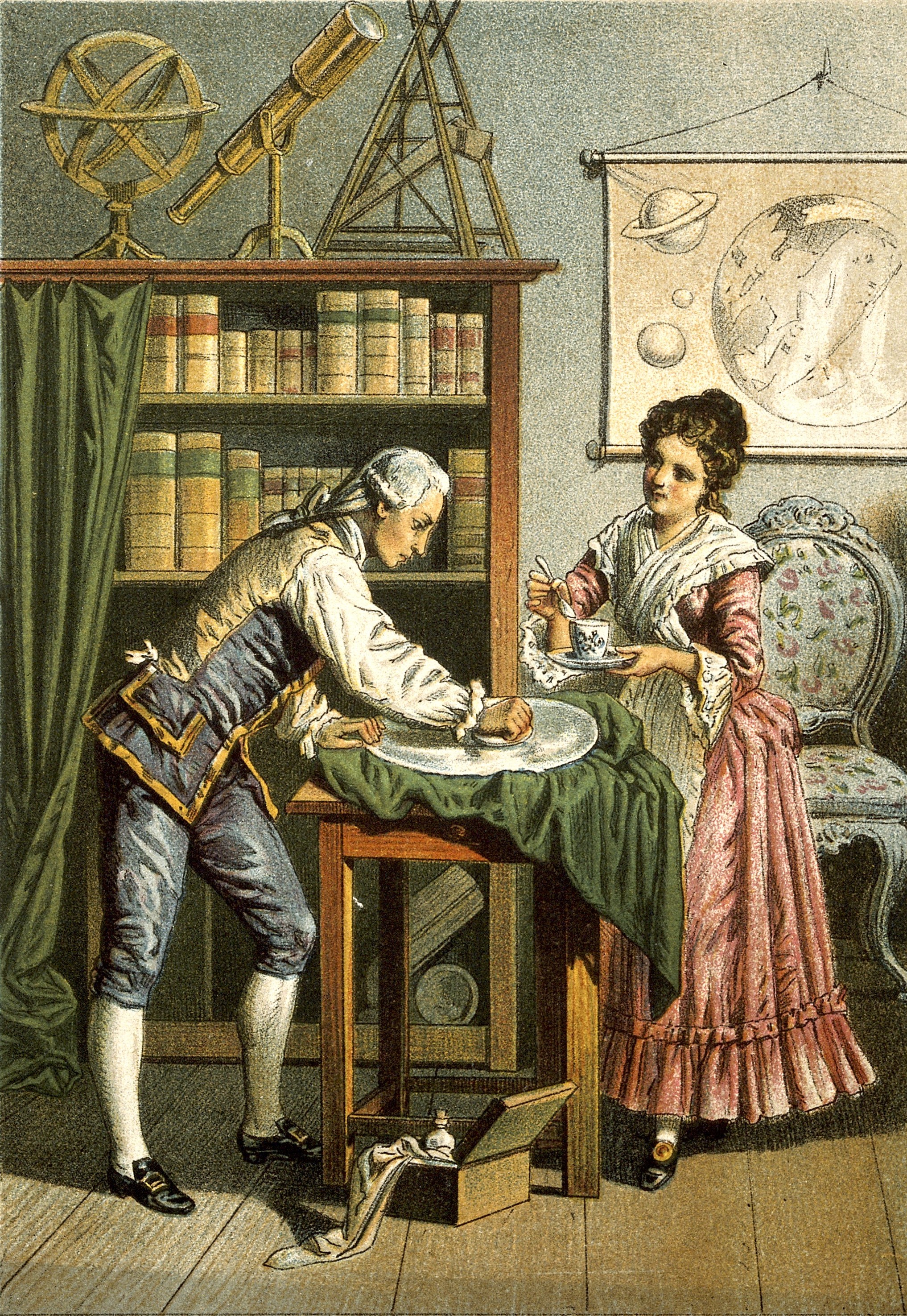
William Herschel was an excellent astronomer … but he was also very lucky in his career! He is famous for the discovery of the planet Uranus, on March 13, 1781. However, this very important discovery was entirely accidental, since he was actually trying to study something completely different: the spatial distribution of the stars in the Milky Way with measurements of their distances. This study resulted in a second, very important discovery, again accidental.
To determine the structure of the Universe he was interested in double stars, namely stars that appeared to be close in space, because he intended to use the variation in their relative position in the sky, which he thought he could measure accurately, to estimate their distance. How?
One of the first and conceptually simple methods to calculate distances uses the trigonometric parallax: an object that is close by appears to move relative to the distant background when observed from different viewpoints. The background stays fixed, the object appears projected in different places if the observer moves.
However, to work properly, the method requires high precision and very good instrumentation, probably beyond what was available at the time. For this reason Herschel’s idea was to use pairs of stars and their relative positions in the sky, which he thought were easier to measure than absolute positions.
Together with his sister Caroline he compiled a very accurate catalog of “pairs of stars”, where they recorded positions of the stars on different nights for a long time.
He never actually succeeded in measuring the parallax, because the method was based on false assumptions on the intrinsic nature of the stars. At the time, the common belief was that all stars were alike, so fainter stars were also more distant. Thus he could measure the parallax of the brighter (closer) star against the position of the fainter (more distant) one. We know now that stars come in a variety of luminosities, colors and temperatures, so this method would never work … but this we can only say with hindsight!
Again luck and serendipity favoured him. Instead of measuring parallax, he noticed first that the number of close pairs in the sky was very large, too large to think that all these stars were so near by chance. Since he had many values of the positions, he then noticed that they moved in the sky as if they were orbiting one around the other!
But that meant that they were actually close to each other in real space, not just projected. And if they were close then they were part of the same system, a binary stellar system!
Another important discovery that greatly helped progress in astronomy.
Credits: By Wellcome Collection gallery (2018-04-03): wellcomecollection.org CC-BY-4.0, CC BY 2.0, commons.wikimedia.org
